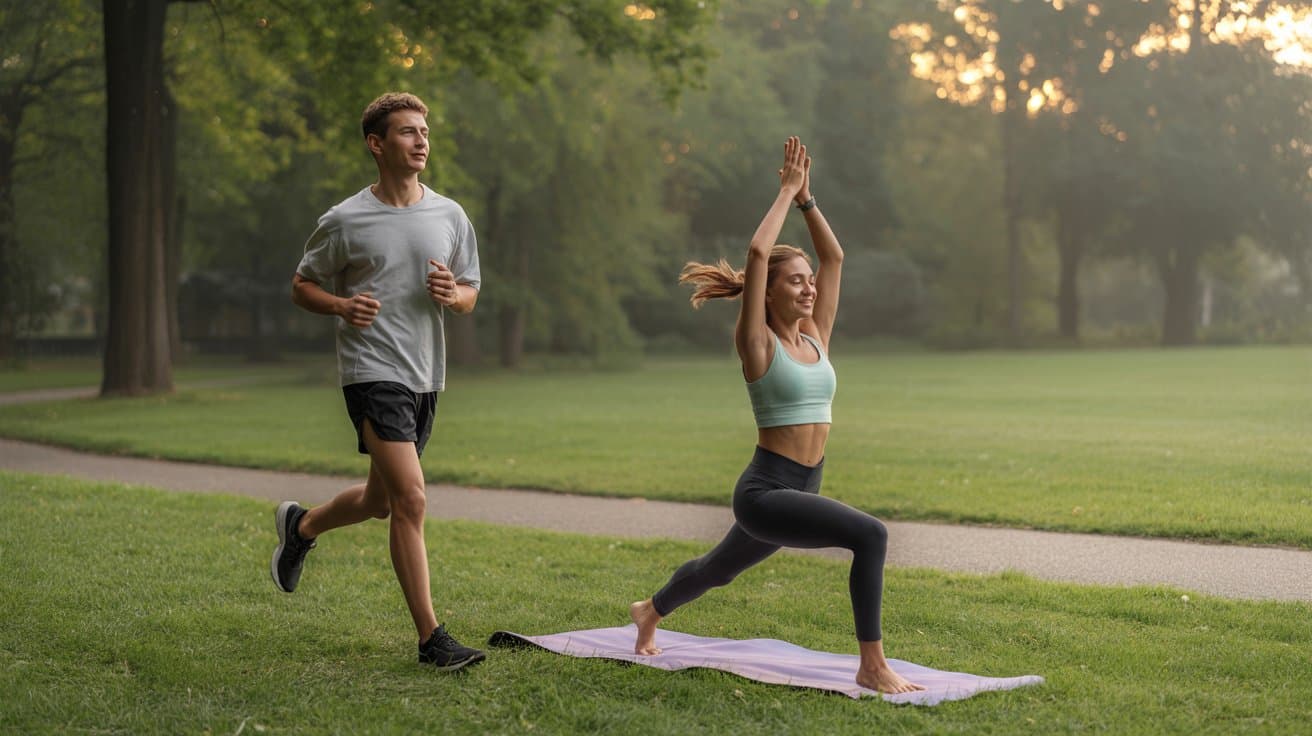The Link Between Emotional Health and Physical Activity
Sep 26, 2025 • 4 min read

In today’s fast-paced world, maintaining emotional balance can be a challenge. However, one powerful tool often overlooked is physical activity. Exercise does more than just improve physical fitness; it has a profound impact on mental health and overall mental well-being.
Let’s explore how staying active can uplift your emotional health and why movement is essential for both the mind and body.
How Physical Activity Boosts Mental Health
1. Releases Feel-Good Hormones
Exercise triggers the release of endorphins, dopamine, and serotonin—chemicals that boost your mood and reduce feelings of stress and anxiety.
2. Reduces Stress
Physical activity helps lower cortisol, the stress hormone, leaving you feeling calmer and more relaxed.
3. Improves Sleep Quality
Regular exercise promotes deeper and more restorative sleep, which is vital for maintaining emotional balance and mental clarity.
4. Boosts Self-Esteem
Achieving fitness goals, no matter how small, can improve self-confidence and contribute to a positive self-image.
The Connection Between Mental and Physical Well-being
Your mind and body are deeply interconnected. Poor emotional health can manifest physically, leading to fatigue, tension, or even illness. Conversely, physical activity directly influences the brain, fostering better mental well-being.
- Brain Health: Exercise increases blood flow to the brain, enhancing memory, focus, and overall cognitive function.
- Stress Relief: Activities like yoga or running provide a natural outlet for stress, helping you manage emotional challenges more effectively.
Types of Exercise That Support Emotional Health
Not all physical activities are created equal when it comes to improving mental health. Here are some of the most effective forms of exercise for emotional well-being:
1. Cardio Workouts
Activities like running, cycling, or swimming boost heart health and stimulate endorphin production, creating a “runner’s high.”
2. Yoga and Stretching
Combining movement with mindfulness, yoga helps reduce anxiety and improve emotional balance.
3. Strength Training
Lifting weights or doing bodyweight exercises can increase feelings of empowerment and resilience.
4. Outdoor Activities
Exercising in nature, such as hiking or gardening, combines the benefits of physical activity with the calming effects of fresh air and natural scenery.
Making Exercise Part of Your Emotional Wellness Routine
1. Start Small
Begin with 15-20 minutes a day and gradually increase your activity level.
2. Find Joy in Movement
Choose activities you genuinely enjoy to stay consistent—whether it’s dancing, playing a sport, or walking your dog.
3. Pair Exercise with Mindfulness
Activities like yoga or tai chi merge physical movement with mental focus, offering double the benefits.
4. Stay Social
Join a class or find a workout buddy to combine fitness with social interaction, which is another key to emotional well-being.
The Long-Term Benefits
Engaging in regular physical activity doesn’t just provide temporary relief—it contributes to long-term mental health and stability:
- Resilience: Exercise strengthens your ability to cope with life’s challenges.
- Happiness: Active people are less likely to experience depression and anxiety.
- Productivity: Improved focus and energy levels lead to better performance in daily tasks.
Final Thoughts
The connection between mental health and physical activity is undeniable. Whether you’re managing stress, battling anxiety, or just looking to enhance your emotional balance, regular exercise is a powerful tool for achieving greater mental well-being.
Start small, stay consistent, and discover how movement can transform your emotional health—and your life.
